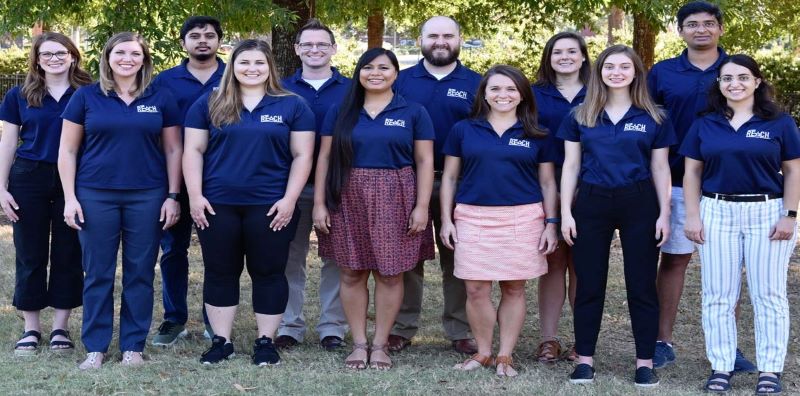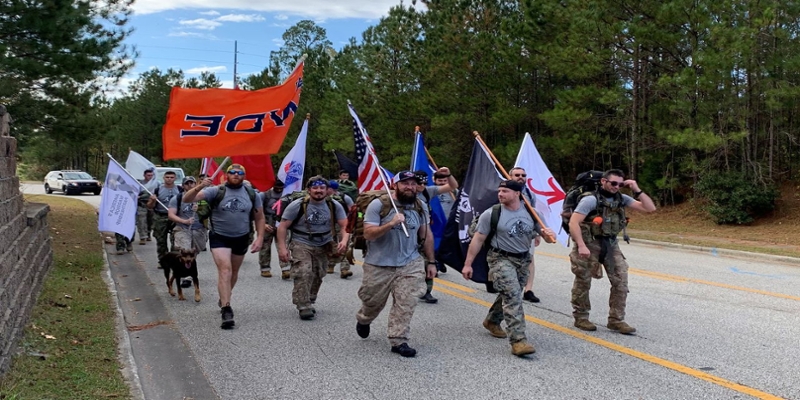The military is a unique cultural institution that significantly influences its members, contributing to the development and transformation of their identities. Despite growing interest in identity research in the military, challenges persist in the conceptualization of military identity, including understanding how it forms, assessing the influence of military culture on identity development, and evaluating the implications for mental health. The primary objective of this scoping review was to map the complexities of military culture’s impact on military identity and its effects on mental health.A scoping review of the literature was conducted using the Joanna Briggs Institute Scoping Review Methodology. Studies were included if they described military culture, military identity, and mental health, resulting in 65 eligible studies. The extracted data were thematically analyzed to identify how military culture impacts military identity and mental health and well-being.Multiple identities were evident within the military population, with 2 overarching identities, loyalty and military, overall conferring positive mental health outcomes. Where these identities were hidden or disrupted, poorer mental health outcomes were observed.The scoping review conducted in this study challenges the notion of military identity as a singular concept promoting positive mental health outcomes. It highlights its multifaceted nature, revealing that individuals may face identity concealment and disruptions during periods of transition or adjustment, resulting in adverse mental health outcomes. To capture the complexity of military identity, the authors developed the Military Identity Model (MIM). Military leaders, policymakers, and health care professionals are encouraged to recognize the complex nature of military identity and its impact on mental health and well-being. We recommend using the Military Identity Model to explore military identity and adjustment-related difficulties.
Library (298)
Research in Action (10)
Featured News (3)
Showing library results for: military culture
APA Citation:
Heward, C., Li, W., Chun Tie, Y., & Waterworth, P. (2024). A scoping review of military culture, military identity, and mental health outcomes in military personnel. Military Medicine, usae276. https://doi.org/10.1093/milmed/usae276
Focus:
Mental health
Programming
Branch of Service:
Multiple branches
Air Force
Army
Marine Corps
Navy
Military Affiliation:
Active Duty
Population:
Adulthood (18 yrs & older)
Young adulthood (18 - 29 yrs)
Thirties (30 - 39 yrs)
Middle age (40 - 64 yrs)
Aged (65 yrs & older)
Very old (85 yrs & older)
APA Citation:
Sherborne, V., & Tod, A. (2024). The psychological effects of mesothelioma in the UK military context from the carer's perspective: A qualitative study. Illness, Crisis & Loss, 32(2), 171-191. https://doi.org/10.1177/10541373221122964
Focus:
Mental health
Physical health
Veterans
Branch of Service:
International Military
Military Affiliation:
Veteran
Population:
Adulthood (18 yrs & older)
Middle age (40 - 64 yrs)
Aged (65 yrs & older)
Authors: Sherborne, Virginia; Tod, Angela; Taylor, Bethany
Year: 2024
Abstract
Mesothelioma is an incurable asbestos-related cancer with a high symptom burden. Its long lead time means cases in the military context tend to be amongst veterans. Research into the lived experience of mesothelioma is sparse. Research shows British veterans and their families are likely to have particular needs accessing health services and support. This study explored the psychological effects of mesothelioma in the UK military context from the carer's perspective. It comprised a secondary data analysis of interview data plus semi-structured interviews with family carers of UK veterans with a mesothelioma diagnosis. Themes developed included ‘Going the extra mile’; ‘Shifts in previously robust characteristics and roles’; and ‘Needing to know’. Military culture impacted both patients and carers, with participants reporting a reluctance to show weakness. Carers experienced guilt and traumatic stress symptoms. Moral injury was reported relating to carers’ interactions with the Ministry of Defence (MOD) and the National Health Service (NHS).
3 What comes next: Finding purpose post trauma
APA Citation:
Marfilius, K. J., Daugherty, D., & Hamilton, R. (2024). What comes next: Finding purpose post trauma. Journal of Veteran Studies, 10(1), 284-287. https://doi.org/10.21061/jvs.v10i1.562
Focus:
Trauma
Mental health
Other
Branch of Service:
Multiple branches
Air Force
Army
Military Affiliation:
Veteran
Population:
Adulthood (18 yrs & older)
Middle age (40 - 64 yrs)
Authors: Marfilius, Kenneth J.; Daugherty, Dee; Hamilton, Rachel
Year: 2024
Abstract
What comes next? As two former active-duty military officers this is a question we have personally engaged with in our own lives and know it to be true for many fellow veterans. However, asking oneself, “What comes next?” does not need to be done in isolation, leading to a sense of hopelessness or lack of self-worth. It could very well be the exploratory stage needed during one of the most unique and oftentimes intense transitions a veteran may experience. The transition from military service to civilian society can be a tremendous culture shock and lead to veterans questioning their new identity as a civilian. This article highlights the cathartic effects of doing something bigger than yourself to reinforce your sense of purpose after military service. It combines the experience of two former military officers across different military disciplines—mental health and combat.
APA Citation:
Page, A. P., Ross, A. M., & Solomon, P. (2024). “The culture” is truly the issue: A preliminary exploration of active duty female spouses’ acculturation to military life. Families in Society. Advance online publication. https://doi.org/10.1177/10443894231211357
Focus:
Mental health
Couples
Other
Branch of Service:
Multiple branches
Army
Navy
Marine Corps
Air Force
Coast Guard
Military Affiliation:
Active Duty
Veteran
Population:
Adulthood (18 yrs & older)
Young adulthood (18 - 29 yrs)
Thirties (30 - 39 yrs)
Middle age (40 - 64 yrs)
Authors: Page, Amy P.; Ross, Abigail M.; Solomon, Phyllis
Year: 2024
Abstract
Acculturating to the Active Duty military lifestyle can be challenging yet rewarding. Using acculturation theory as a lens, this qualitative study explored experiences of women who transitioned into Active Duty culture through marrying a male service member. Quantitative and qualitative data were collected via online survey from women married to men currently or recently serving on Active Duty. In total, 202 survey responses were received, with 194 providing qualitative data. Data were analyzed using thematic analysis. Three themes were identified: descriptions of military culture, acculturation strategies, and processes involved with acculturation. Limitations include the cross-sectional and preliminary nature of the data. Findings can inform culturally responsive practice at all levels and indicate this is a fruitful area for further study.
APA Citation:
Jamieson, S. K., Cerel, J., & Maple, M. (2024). Impacts of exposure to suicide of a military colleague from the lived experience of veterans: Informing postvention responses from a military cultural perspective. Death Studies, 48(7), 688-697. https://doi.org/10.1080/07481187.2023.2261408
Focus:
Veterans
Trauma
Mental health
Branch of Service:
Multiple branches
Military Affiliation:
Veteran
Population:
Adulthood (18 yrs & older)
Young adulthood (18 - 29 yrs)
Thirties (30 - 39 yrs)
Middle age (40 - 64 yrs)
Authors: Jamieson, Sacha Kendall; Cerel, Julie; Maple, Myfanwy
Year: 2024
Abstract
Although exposure to the suicide death of a military colleague has been shown quantitatively to increase suicide risk factors among veterans, there are very few studies where veterans have been asked about this experience. This article presents a qualitative analysis of 38 interviews with U.S. veterans with exposure to the suicide death of a military colleague in past war operations. Participants described the impact of exposure in relation to the military context and official response to the death, which had long-term ramifications. Our findings suggest suicide prevention and postvention responses for veterans should be informed by the lived experience of veterans, including those for whom this experience occurred significantly in the past, as the impacts of different military policies and practices in response to suicide deaths over time are relevant to the impact of exposure to death of a military colleague in the short and long term.
APA Citation:
Tompkins, K. J., Roth, B., Wu, T. Y., Somohano, V. C., & Denneson, L. M. (2024). Perspectives on military culture among veterans with a recent suicide attempt: Illustrating gender differences and informing suicide prevention. Armed Forces & Society, 50(2), 404-417. https://doi.org/10.1177/0095327X221123375
Focus:
Veterans
Mental health
Trauma
Branch of Service:
Multiple branches
Military Affiliation:
Veteran
Population:
Young adulthood (18 - 29 yrs)
Adulthood (18 yrs & older)
Thirties (30 - 39 yrs)
Middle age (40 - 64 yrs)
Aged (65 yrs & older)
Authors: Tompkins, Kyla J.; Roth, Brandon; Wu, Tiona Y.; Somohano, Vanessa C.; Denneson, Lauren M.
Year: 2024
Abstract
This article aims to expand our understanding of military culture as it relates to gender and veterans? mental health, drawing from rich qualitative data. Fifty in-depth interviews (25 men, 25 women) were conducted with veterans who had a recent suicide attempt (within 6 months). Interviews revealed major themes of unequal standards and a hostile environment in the military. Women strived to fit in and experienced differential treatment in their physical training, professional expectations, and family life; men recollected masculine bonds and camaraderie through drinking. Women described the hostile environment of the military through their experiences of sexual violence and both genders described a culture of silence where signs of weakness were shamed. Findings support a cultural shift toward equitable gender norms for military members. Policy should focus on increased transparency institutionally?and between members?as well as improving protection and response to reported abuse.
APA Citation:
Abidi, C. B., Patten, S., Houle, S. A., Hoffer, K., Reeves, K., Bélanger, S., Nazarov, A., & Wells, S. (2024). Canadian Armed Forces veterans’ perspectives on the effects of exposure to children in armed conflict during military service: Protocol for a qualitative study. JMIR Research Protocols, 13(1), Article e57146. https://doi.org/10.2196/57146
Focus:
Mental health
Trauma
Deployment
Branch of Service:
International Military
Military Affiliation:
Veteran
Population:
Adulthood (18 yrs & older)
Young adulthood (18 - 29 yrs)
Thirties (30 - 39 yrs)
Middle age (40 - 64 yrs)
Authors: Abidi, Catherine Baillie; Patten, San; Houle, Stephanie A.; Hoffer, Ken; Reeves, Kathryn; Bélanger, Stéphanie; Nazarov, Anthony; Wells, Samantha
Year: 2024
Abstract
Background: The mental health of military personnel has garnered increased attention over the last few decades; however, the impacts of perpetuating, observing, or failing to prevent acts that transgress deeply held moral standards, referred to as moral injuries, are less understood, particularly in relation to encounters with children during deployment. This paper describes a multiphased research protocol that centers around the lived experiences of Canadian Armed Forces (CAF) Veterans to understand how encounters with children during military deployments impact the well-being and mental health of military personnel. Objective: This study has four objectives: (1) highlight the lived experiences of CAF Veterans who encountered children during military deployments; (2) improve understanding of the nature of experiences that military personnel faced that related to observing or engaging with children during military service; (3) improve understanding of the mental health impacts of encountering children during military service; and (4) use participatory action research (PAR) to develop recommendations for improving preparation, training, and support for military personnel deployed to contexts where encounters with children are likely. Methods: The research project has 2 main phases where phase 1 includes qualitative interviews with CAF Veterans who encountered children during military deployments and phase 2 uses PAR to actively engage Canadian Veterans with lived experiences of encountering children during military deployments, as well as health professionals and researchers to identify recommendations to better address the mental health effects of these encounters. Results: As of January 26, 2024, a total of 55 participants and research partners have participated in the 2 phases of the research project. A total of 16 CAF Veterans participated in phase 1 (qualitative interviews), and 39 CAF Veterans, health professionals, and researchers participated in phase 2 (PAR). The results for phase 1 have been finalized and are accepted for publication. Data collection and analysis are ongoing for phase 2. Conclusions: Prioritizing and valuing the experiences of CAF Veterans has deepened our understanding of the intricate nature and impacts of potentially morally injurious events involving children during military deployments. Together with health professionals and researchers, the PAR approach empowers CAF Veterans to articulate important recommendations for developing and improving training and mental health support. This support is crucial not only during the deployment cycle but also throughout the military career, helping lessen the effects of moral injury among military personnel.
8 “I’ve seen what evil men do”: Military mothering and children’s outdoor risky play
APA Citation:
Bauer, M. E. E., Giles, A. R., & Brussoni, M. (2024). 'I’ve seen what evil men do’: Military mothering and children’s outdoor risky play. Leisure Sciences, 46(2), 150-166. https://doi.org/10.1080/01490400.2021.1920521
Focus:
Children
Parents
Branch of Service:
International Military
Military Affiliation:
Active Duty
Population:
Adulthood (18 yrs & older)
Thirties (30 - 39 yrs)
Middle age (40 - 64 yrs)
Authors: Bauer, Michelle E. E.; Giles, Audrey R.; Brussoni, Mariana
Year: 2024
Abstract
The restrictions on children’s outdoor risky play is emerging as a pressing public health concern. To the best of our knowledge, no research has examined military mothers’ perspectives on outdoor risky play. Military mothers have unique knowledge of war and combat and potential threats to children’s safety due to their communications with their partners in combat arms occupations. Their perspectives on outdoor risky play are important to consider to expand scholarly understandings of risk discourses in the context of military culture. We conducted semi-structured interviews with 16 military mothers from across Canada. The results of our reflexive thematic analysis are threefold: (1) Outdoor risky play in close physical proximity to strangers and cars is dangerous for children; (2) outdoor risky play should not result in children experiencing serious injuries; and (3) outdoor risky play can teach children to assess and manage risks.
9 Perspectives on a good death: A comparative study of veterans and civilians
APA Citation:
Suntai, Z., Laha-Walsh, K., & Albright, D. L. (2024). Perspectives on a good death: A comparative study of veterans and civilians. Death Studies, 48(3), 276-285. https://doi.org/10.1080/07481187.2023.2219641
Focus:
Veterans
Mental health
Other
Branch of Service:
Multiple branches
Military Affiliation:
Veteran
Population:
Adulthood (18 yrs & older)
Young adulthood (18 - 29 yrs)
Thirties (30 - 39 yrs)
Authors: Suntai, Zainab; Laha-Walsh, Kirsten; Albright, David L.
Year: 2024
Abstract
This study aimed to identify any differences between veterans and non-veterans in the importance of domains of the Good Death Inventory. Participants were recruited from Amazon Mechanical Turk to complete a Qualtrics survey on the importance of the 18 domains of the Good Death Inventory scale. Logistic regression models were then used to analyze any differences between veterans (n = 241) and nonveterans (n = 1151). Results showed that veterans (mostly aged 31–50, men, and White) were more likely to indicate that pursuing all treatment possible and maintaining their pride were important aspects of a good death. The results support other studies that have found military culture to be a significant factor in the way veterans view preferences at the end of life. Interventions may include increasing access to palliative care and hospice services for military members and veterans and providing education/training on end-of-life care for healthcare providers who work with this population.
10 Mental health of Canadian children growing up in military families: The child perspective
APA Citation:
Williams, A., Cramm, H., Khalid-Khan, S., Reddy, P., Groll, D., Rühland, L., & Hill, S. (2024). Mental health of Canadian children growing up in military families: The child perspective. Armed Forces & Society, 50(2), 362-382. https://doi.org/10.1177/0095327X221128837
Focus:
Children
Programming
Mental health
Branch of Service:
International Military
Military Affiliation:
Active Duty
Population:
Childhood (birth - 12 yrs)
Adolescence (13 - 17 yrs)
Authors: Williams, Ashley; Cramm, Heidi; Khalid-Khan, Sarosh; Reddy, Pappu; Groll, Dianne; Rühland, Lucia; Hill, Shannon
Year: 2024
Abstract
A recent scoping review indicated military-connected children face stressors that may increase mental health issues. However, the majority of the included literature was American. To examine the experiences of Canadian military-connected children, we conducted in-depth interviews with a purposive sample of Canadian military-connected youth using a qualitative description approach. We conducted a content analysis on interview data, supported by qualitative data analysis software (MAXQDA), with coding done by two researchers who met regularly to discuss coding agreement. Thirteen children in military families participated and described the mental health impact of frequent mobility, parental absence, and risk of parental injury. The experiences of our participants were consistent with the results of an earlier scoping review on this topic. Our results suggest improving military cultural competence among health care providers and enhancing parental support may positively impact child well-being. More research is needed to understand resilience and vulnerability among Canadian military-connected children.
APA Citation:
Murray, C. D., Havlin, H., & Molyneaux, V. (2024). Considering the psychological experience of amputation and rehabilitation for military veterans: A systematic review and metasynthesis of qualitative research. Disability and Rehabilitation, 46(6), 1053-1072. https://doi.org/10.1080/09638288.2023.2182915
Focus:
Physical health
Veterans
Branch of Service:
Multiple branches
Military Affiliation:
Veteran
Population:
Adulthood (18 yrs & older)
Young adulthood (18 - 29 yrs)
Thirties (30 - 39 yrs)
Middle age (40 - 64 yrs)
Authors: Murray, Craig D.; Havlin, Heather; Molyneaux, Victoria
Year: 2024
Abstract
Purpose Research highlights the differences and unique experiences of military veterans experiencing amputation compared to civilians. This review aimed to synthesise qualitative research exploring the experience of amputation and rehabilitation among existing or previous members of the military.Methods A systematic search of six databases (PsycINFO, AMED, MEDLINE, CINAHL, Web of Science and Scopus) was undertaken in March 2022. The results of 17 papers reporting 12 studies published between 2009 and 2022 were synthesised using a meta-ethnographic approach to generate new interpretations reflecting the experiences of members of the military who have experienced limb loss.Results Three themes were developed from the data: (1) Making the physical and psychological transition to life after amputation; (2) The role of the military culture in rehabilitation; and (3) The impact of relationships and the gaze of others during rehabilitation and beyond.Conclusions Military veterans with limb loss experience difficulties in navigating civilian healthcare systems and gaining appropriate support away from the military. Rehabilitation professionals, with psychological training or mentoring, involved in the care of military veterans following amputation could offer psychological support during the transition to civilian life and targeted therapies to veterans experiencing high levels of pain, and facilitate peer support programmes.
12 A schema conceptualisation of psychosocial functioning among transitioned military personnel
APA Citation:
Fry, M. A., Boschen, M. J., Morrissey, S. A., Yalcin, O., & Burton, N. W. (2024). A schema conceptualisation of psychosocial functioning among transitioned military personnel. Cognitive Therapy and Research, 48, 281-291. https://doi.org/10.1007/s10608-023-10455-9
Focus:
Mental health
Substance use
Branch of Service:
International Military
Military Affiliation:
Veteran
Population:
Adulthood (18 yrs & older)
Thirties (30 - 39 yrs)
Middle age (40 - 64 yrs)
Authors: Fry, Megan A.; Boschen, Mark J.; Morrissey, Shirley A.; Yalcin, Ozgur; Burton, Nicola W.
Year: 2024
Abstract
The military to civilian transition process is often associated with a negative impact on psychosocial functioning. Contemporary approaches to understand this are moving away from focussing on posttraumatic stress disorder (PTSD), to examine the military cultural and environmental impacts of service. Schema theory can provide a useful conceptual framework for understanding these issues. The aim of this study was to explore Early Maladaptive Schemas (EMS) across three samples: transitioned military personnel, veterans and first responders with PTSD, and general adults. Method This cross-sectional research used a transitioned military sample recruited specifically for this study (N = 94) and two comparison samples of veterans and first responders diagnosed with PTSD (N = 218), and general adults (N = 264) from previous research. Participants completed a Young Schema Questionnaire (YSQ). Independent t-tests were conducted to compare the three samples. Results Transitioned military personnel were significantly higher than the general adults on the EMS of Vulnerability to Harm, Entitlement, Emotional Inhibition, Punitiveness and Unrelenting Standards and lower on the schema of Enmeshment. Transitioned military personnel were significantly lower than the PTSD sample on 11 out of the 18 EMS. Conclusions The cluster of EMS evident in the transitioned military sample were conceptualised as ‘The Military Mode’. This conceptual framework can be used to understand the psycho-social issues experienced by transitioned military personnel and to inform interventions to promote successful transition.
APA Citation:
Henny, D. (2024). Toxic leadership: A phenomenological investigation of recently retired U.S. Army service members' experiences with toxic leaders [EdD, Liberty University]. https://digitalcommons.liberty.edu/doctoral/5644
Focus:
Programming
Mental health
Other
Branch of Service:
Army
Military Affiliation:
Veteran
Population:
Adulthood (18 yrs & older)
Thirties (30 - 39 yrs)
Middle age (40 - 64 yrs)
Authors: Henny, Dale
Year: 2024
Abstract
This phenomenological study investigates the experiences of recently retired U.S. Army service members with toxic leadership. The study involved a sample of 10 participants, with data collection conducted through one-on-one, face-to-face interviews using semi-structured, open-ended questions. Interviews for the study were conducted face-to-face or through virtual platforms like Zoom or Microsoft Teams, with each session lasting no longer than 90 minutes. Data analysis employed a six-step thematic analysis method, with coding completed through NVivo after initial hand-coding. Findings revealed that the military culture, characterized by strict hierarchy and obedience, inadvertently fosters an environment conducive to toxic leadership. Participants reported that the lack of accountability for abusive leaders and the suppression of subordinates' voices enable toxic behavior. The study highlights the importance of recognizing and addressing toxic leadership within the military. Given the distinct and rigid nature of military rank structures and chain of command, altering an established hierarchy presents challenges. However, the research suggests that fostering leadership styles that highlight authentic and transformational qualities could lead to a more positive and professional military environment.
14 The return home: Disability experiences of Second World War veterans with amputations
APA Citation:
Lowe, M., Lara Peralta, F., & Letts, L. (2024). The return home: Disability experiences of Second World War Veterans with amputations. Journal of Military, Veteran and Family Health, 10(3), 58-66. https://doi.org/10.3138/jmvfh-2023-0017
Focus:
Physical health
Mental health
Other
Branch of Service:
International Military
Military Affiliation:
Veteran
Population:
Adulthood (18 yrs & older)
Middle age (40 - 64 yrs)
Aged (65 yrs & older)
Authors: Lowe, Mikaela; Lara Peralta, Fernanda; Letts, Lori
Year: 2024
Abstract
LAY SUMMARY Analysis of oral history interviews conducted with Canadian Second World War Veterans with amputation identified themes of disability experiences. Overall, the experience and understanding of disability by Veterans with amputation was based on activities they could perform independently, how others saw them, and how they viewed their injuries. The inherent pride and masculinity in not showing a disability was celebrated by the Veterans and is still relevant today, where life-changing injuries, such as amputations, are often thought of as tragedies an individual needs to be strong enough to overcome. The way disability was understood during this time as an individual responsibility influenced today’s military culture. Rehabilitation professionals working with military personnel are encouraged to be conscious of reinforcing injuries as tragedies that need to be independently overcome.
15 A scoping review of interventions targeting the mental health of Australian veterans
APA Citation:
Wadham, B., Andrewartha, L., Lawn, S., Onur, I., & Edney, L. C. (2024). A scoping review of interventions targeting the mental health of Australian veterans. International Journal of Environmental Research and Public Health, 21(6), Article 796. https://doi.org/10.3390/ijerph21060796
Focus:
Veterans
Mental health
Programming
Branch of Service:
International Military
Military Affiliation:
Veteran
Population:
Adulthood (18 yrs & older)
Young adulthood (18 - 29 yrs)
Thirties (30 - 39 yrs)
Middle age (40 - 64 yrs)
Authors: Wadham, Ben; Andrewartha, Lisa; Lawn, Sharon; Onur, Ilke; Edney, Laura Catherine
Year: 2024
Abstract
Serving in the military can have significant impacts on the mental health of veterans and their families. Military personnel can be exposed to a range of physical stressors, psychological trauma, risky lifestyle factors, a regimented military culture, and inadequate support when transitioning out of service. This article reviews research on interventions designed to improve the mental health of Australian military veterans in order to synthesise current knowledge and identify gaps in the literature. Our scoping review followed PRISMA recommendations and comprised peer-reviewed literature published since 2000. The review demonstrates a dominance of psychologically driven research paradigms and interventions and a neglect of the importance of social factors in shaping veteran mental health. There is a wide range of interventions available; however, the literature is narrow and limited. We found little evidence that the lived experience of veterans had been harnessed in program design or delivery. We argue the need for a holistic approach that moves beyond psychological and biological understandings of health and wellbeing to incorporate social and cultural determinants. Future research could adopt a stronger multidisciplinary approach, increased socio-cultural understanding, and greater consideration of the lived experience of veterans and their families.
APA Citation:
Morris, C., Wright, G., & Herbert, L. (2024). The positive relational couples therapy model: A group therapeutic approach for LGBTQIA+ military couples. The Family Journal. Advance online publication. https://doi.org/10.1177/10664807241235323
Focus:
Couples
Programming
Mental health
Branch of Service:
Multiple branches
Military Affiliation:
Active Duty
Population:
Adulthood (18 yrs & older)
Young adulthood (18 - 29 yrs)
Thirties (30 - 39 yrs)
Middle age (40 - 64 yrs)
Authors: Morris, Crystal; Wright, Galaxina; Herbert, Léa
Year: 2024
Abstract
Given the history of discrimination and increased mental health risks surrounding LGBTQIA+ service members, group counseling is a practical approach for practitioners to mitigate effects in a therapeutic setting. This article synthesizes the Positive Relational Couples Therapy (PRCT) model, incorporating concepts of the Multicultural and Social Justice Counseling Competencies (MSJCC), Relational-Cultural Theory (RCT), the PERMA model, and Gottman's Method Couples Therapy as a group process to provide a conceptual framework. An outline of the PRCT model and case illustration are provided for practitioners for group counseling with LGBTQIA+ military couples. Practical group considerations and implications for this work are discussed.
APA Citation:
Hoopsick, R. A., Vest, B. M., Homish, D. L., & Homish, G. G. (2024). United States Army Reserve/National Guard soldiers’ healthcare experiences, attitudes, and preferences: Differences based on deployment status. Psychology, Health & Medicine. Advance online publication. https://doi.org/10.1080/13548506.2024.2303409
Focus:
Deployment
Physical health
Mental health
Branch of Service:
Army
Military Affiliation:
Reserve
Guard
Population:
Adulthood (18 yrs & older)
Young adulthood (18 - 29 yrs)
Thirties (30 - 39 yrs)
Middle age (40 - 64 yrs)
Authors: Hoopsick, Rachel A.; Vest, Bonnie M.; Homish, D. Lynn; Homish, Gregory G.
Year: 2024
Abstract
Some United States Army Reserve/National Guard (USAR/NG) soldiers have substantial health needs, which may be service-related, but not necessarily resulting from deployment. However, most USAR/NG members need to have been deployed to qualify for Veterans Administration (VA) benefits. Therefore, many USAR/NG soldiers seek care from civilian healthcare providers (HCPs). Using a subset (N = 430 current/former soldiers) of Operation: SAFETY study data, we used regression models to examine differences in healthcare experiences, attitudes, and preferences by deployment status (never-deployed vs. previously-deployed). Final models controlled for age, sex, rank (enlisted vs. officer), military status (current vs. former military), and RAND SF-36 General Health Score. Over 40% of soldiers agreed that civilian HCPs should ask patients about their military service, but never-deployed soldiers were less likely to report being asked about their service (p < 0.05) or how their service affects their health (p < 0.10). Never-deployed soldiers were also less likely to attribute their health concerns to military service (p < 0.001). Although never-deployed soldiers were more likely to prefer receiving physical (p < 0.05) and mental (p < 0.05) healthcare outside of the VA than previously-deployed soldiers, never-deployed soldiers had low confidence in their HCP’s understanding of their needs (49% thought that their civilian HCP did not understand them; 71% did not think that their civilian HCP could address military-related health concerns; 76% thought that their civilian HCP did not understand military culture). Findings demonstrate that although civilian HCPs may be the preferred (and only) choice for never-deployed USAR/NG soldiers, they may need additional support to provide care to this population.
18 A peer veteran approach to the caring letters suicide prevention program: Preliminary data
APA Citation:
Livingston, W. S., Carter, S. P., Leitner, R., Ton, A. T., Gebhardt, H., Zoellner, L. A., Mizik, N., Rojas, S. M., Buchholz, J. R., & Reger, M. A. (2024). A peer veteran approach to the caring letters suicide prevention program: Preliminary data. Psychological Services, 21(1), 1–12. https://doi.org/10.1037/ser0000760
Focus:
Veterans
Programming
Mental health
Branch of Service:
Multiple branches
Air Force
Army
Navy
Marine Corps
Coast Guard
Military Affiliation:
Veteran
Reserve
Population:
Adulthood (18 yrs & older)
Young adulthood (18 - 29 yrs)
Thirties (30 - 39 yrs)
Middle age (40 - 64 yrs)
Authors: Livingston, Whitney S.; Carter, Sarah P.; Leitner, Rebecca; Ton, Andrew T.; Gebhardt, Heather; Zoellner, Lori A.; Mizik, Natalie; Rojas, Sasha M.; Buchholz, Jonathan R.; Reger, Mark A.
Year: 2024
Abstract
Caring Letters is a prevention program aimed at reducing suicide risk; however, clinical trials indicate mixed results among military and veteran samples. The present study aimed to pilot a new version of the Caring Letters intervention that was adapted to military culture in order to emphasize peer support. The supportive letters, traditionally sent from clinicians, were written by peer veterans (PVs) who volunteered from local Veteran Service Organizations (VSOs). PVs (n = 15) attended a 4-hr workshop to learn about Caring Letters and write six letters to a veteran with a recent hospitalization for suicide risk (hospitalized veterans [HVs]; n = 15 completed a baseline assessment). Letters from PVs were sent to HVs once a month for 6 months following discharge from the psychiatric inpatient unit. The study used a limited efficacy approach to examine feasibility outcomes including implementation procedures, participant recruitment and retention rates, and barriers and facilitators. Acceptability measures examined HV satisfaction, perceived privacy and safety, and PV workshop satisfaction. Among HVs, results suggested that suicidal ideation improved from baseline to follow-up (g = 3.19). Results suggested resilience scores improved among HVs (g = 0.99). Results also suggested a possible reduction in stigma associated with mental health treatment among PVs at 1-month postworkshop assessment. Interpretation of the results is limited by the design and sample size, but the results provide preliminary support for the feasibility and acceptability of a PV approach to Caring Letters. (PsycInfo Database Record (c) 2023 APA, all rights reserved)
19 Gender role reversal: Civilian husbands of U.S. military servicewomen as tied-migrant workers
APA Citation:
Dowling, L. E., Jackson, J. B., & Landers, A. L. (2024). Gender role reversal: Civilian husbands of U.S. military servicewomen as tied-migrant workers. Family Relations, 73(1), 441-465. https://doi.org/10.1111/fare.12936
Focus:
Mental health
Other
Branch of Service:
Multiple branches
Army
Marine Corps
Air Force
Navy
Military Affiliation:
Active Duty
Population:
Adulthood (18 yrs & older)
Young adulthood (18 - 29 yrs)
Thirties (30 - 39 yrs)
Middle age (40 - 64 yrs)
Authors: Dowling, L. Emily; Jackson, Jeffrey B.; Landers, Ashley L.
Year: 2024
Abstract
Objective This qualitative study examined the experiences of male spouses of female service members in the U.S. military (civilian husbands of servicewomen) in their positions as tied-migrant workers. Background Employment of civilian husbands of servicewomen is frequently affected when they geographically relocate due to their wives' military service. Because societal norms for husbands as primary breadwinners in marriages persist and the majority of military couples consist of male service members married to female civilian spouses, civilian husbands of servicewomen may experience a gender role reversal in their identities as a spouse and as a provider within their relationships and military culture. Method Semistructured interviews were conducted with 22 civilian husbands who experienced at least one geographic relocation due to their wife's military service. Descriptive phenomenological analysis was used to discover the essence of participants' experiences. Results Themes around defining masculinity, minority experiences in the military, and nontraditional gender provider roles as tied-migrant workers emerged. Participants experienced a gender role reversal as tied-migrant workers and as military spouses, and they had some difficulties integrating into military communities. Participants expanded their masculine identities to include performing traditionally feminine tasks and valuing egalitarianism in their spousal relationships when they experienced barriers to breadwinning. Conclusion Findings indicated the importance of emotional support as civilian husbands navigate their masculine identities and relationships both with spouses and as gender minorities in their communities. Implications Clinical recommendations for psychotherapists are provided with an emphasis on using emotionally focused therapy with couples consisting of civilian husbands and servicewomen.
APA Citation:
Olapeju, B., Hendrickson, Z., Shanahan, P., Mushtaq, O., & Ahmed, A. (2024). Health behavior profiles and association with mental health status among US active-duty service members. Frontiers in Public Health, 12, Article 1324663. https://doi.org/10.3389/fpubh.2024.1324663
Focus:
Mental health
Substance use
Physical health
Branch of Service:
Multiple branches
Military Affiliation:
Active Duty
Population:
Adulthood (18 yrs & older)
Young adulthood (18 - 29 yrs)
Thirties (30 - 39 yrs)
Authors: Olapeju, Bolanle; Hendrickson, Zoe; Shanahan, Patrice; Mushtaq, Omar; Ahmed, Anwar
Year: 2024
Abstract
Introduction: This study investigated the clustering of health behaviors among US active duty servicemembers (ADSM) into risk profiles and explored the association between these profiles with ADSM sociodemographic characteristics and mental health status.Methods: This study utilized secondary data from the 2018 Health Related Behaviors Survey (HRBS), a Department of Defense (DoD) self-administered online survey. Health behaviors included physical activity, screen use, sleep habits, tobacco/substance use, alcohol drinking, preventive health care seeking and condom use at last sex/ having multiple sexual partners. Past-year mental health status was measured using the Kessler Screening Scale for Psychological Distress (K6). Latent class analysis (LCA) on health behaviors was used to cluster ADSMs into risk profiles. Multivariable logistic model was used to examine whether ADSM characteristics and mental health status were associated with ADSMs' risk profiles.Results: The LCA identified a four-class model that clustered ADSMs into the following sub-groups:(1) Risk Inclined (14.4%), (2) Screen UsersHigh Screen Users (51.1%), (3) Poor Sleepers (23.9%) and (4) Risk Averse (10.6). Over a tenth (16.4%) of ADSMs were categorized as having serious psychological distress. Being male, younger, less educated, in the Army, Marine Corps or Navy were associated with higher odds of being Risk Inclined (AOR ranging from 1.26 to 2.42). Compared to the reference group of Risk Adverse ADSMs, those categorized as Risk Inclined (AOR: 8.30; 95% CI: 5.16-13.36), Screen UsersHigh Screen Users (AOR: 2.44; 95% CI: 1.56-3.82) and Poor Sleepers (AOR: 5.26; 95% CI: 3.38-8.19) had significantly higher odds of having serious psychological distress.Discussion: Study findings suggest opportunities to tailor behavioral and health promotion interventions for each of the distinct risk profiles. For example, ADSM described as Risk Inclined may benefit from preventive mental health services. Solutions for ADSM described as Poor Sleepers may include education on sleep hygiene; instituting duty schedules; and shifting military cultural norms to promote sleep hygiene as a pathway to optimal performance and thus military readiness. ADSM with low-risk behavior profiles such as those described as Risk Averse may prove beneficial in the roll-out of interventions as they act as peer-educators or mentors.
AUBURN UNIVERSITY AWARDED MILITARY REACH FOR SECOND CONSECUTIVE TERM
OPERATION IRON RUCK: JOINING FORCES TO COMBAT VETERAN SUICIDE HELP
HOW TO SERVE THOSE WHO SERVE – MISSION: ALABAMA

Loading










